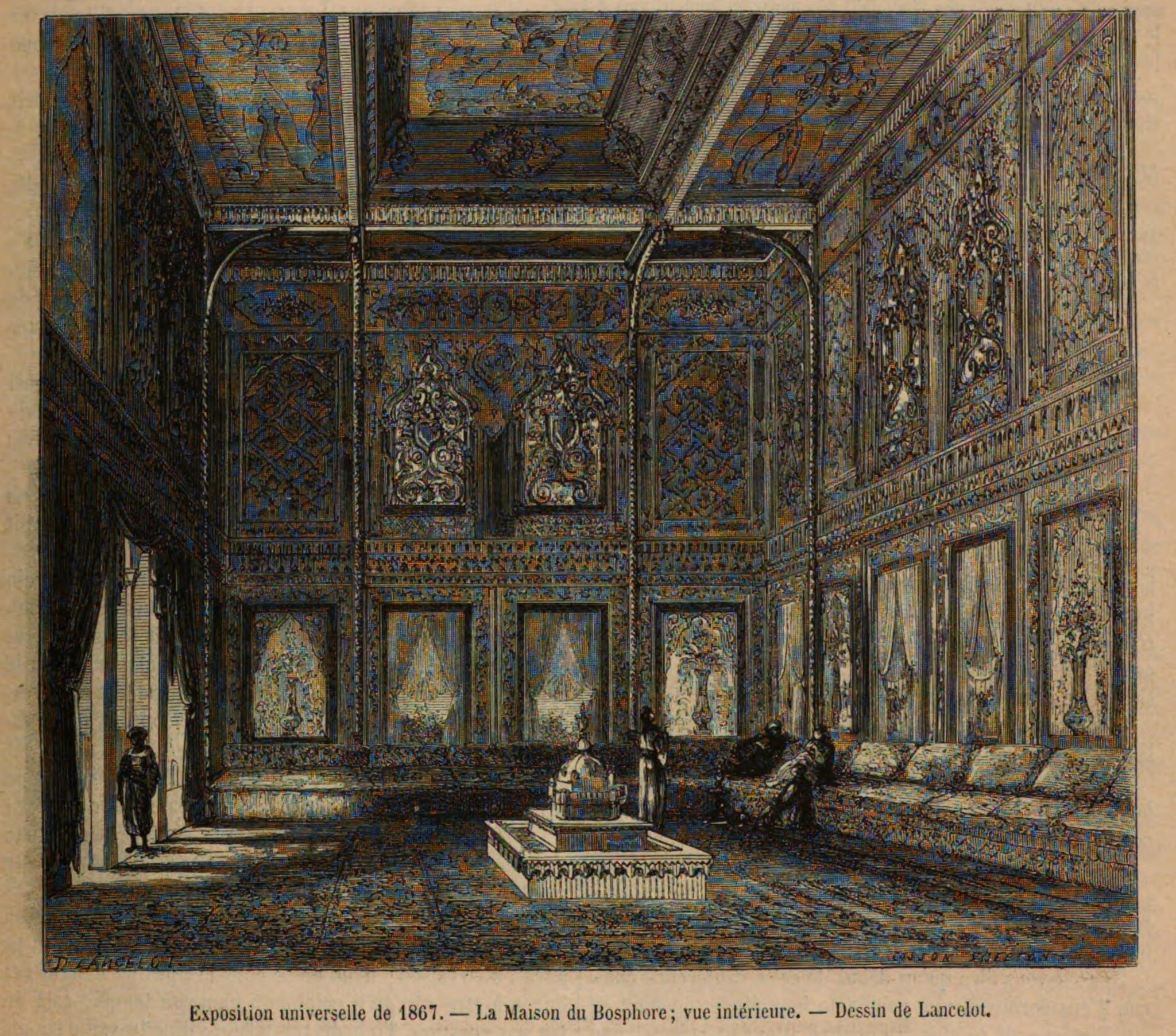Research
This illustration shows the interior architecture Pavillon du Bosphore in a very stylized and simplified way, such that the materials of the interior decoration are unclear. But bearing in mind other information on the Pavillon du Bosphore (IG_398), as well as the text accompanying the illustration, one can identify the upper wall panels as stucco and glass windows. According to the newspaper article, the windows, which looked dull from the outside, but sparkled on the inside, and were of a more muted brilliance than the windows of Western cathedrals. The technique is compared with that of Western stained-glass windows: instead of being set in a thin lead network, the coloured glass was set in a thick plaster lattice to reflect and soften the light by casting a shadow. (‘Les fenêtres de la galerie supérieure, d’un aspect si morne quand on les regardait du dehors, brillaient à l’intérieur comme nos verrières de cathédrales, avec un éclat plus voilé pourtant ; car les vitraux, au lieu d’être sertis dans un mince réseau de plomb, s’enchâssaient profondément dans une épaisse armature de plâtre dont la paroi reflétait et adoucissait la lumière, et dont l’ombre portée divisait et atténuait l’éclat de la verrière.’; La Maison Du Bosphore, 1867, p. 389).
The stucco and glass windows of the Ottoman Mosque, which were auctioned off after the world’s fair ended, are characterized as being very similar to the ones in the Pavillon du Bosphore (IG_398). Comparing the photographic record of the stucco and glass windows in the mosque with the ones in the illustration of the pavilion, one can understand the typological similarities, as both show a symmetrical tendril ornament with scrolls that fills the surface (IG_108).
Dating
1867
Related Locations
Place of Manufacture

